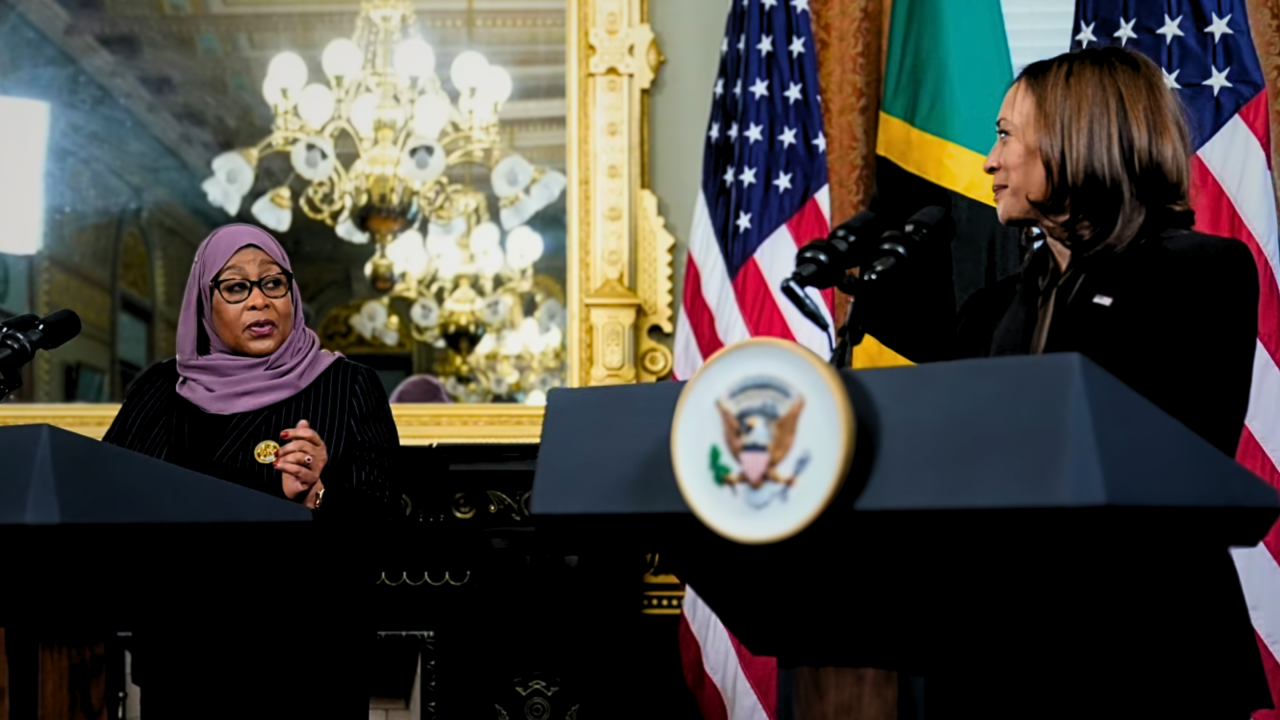
US seeks partnership with Tanzania to develop infrastructure in order to compete with China for access to valuable minerals
The US is involving Tanzania in the proposed Lobito Corridor project to access the Kabanga nickel deposit, with a broader emphasis on competition with China in the regions of development.
This week, new information came to light as Washington emphasized the significance of Tanzania in connecting the corridor from the Atlantic to the Indian Ocean. This connection will facilitate investments in the abundant natural resources found in Angola, the Democratic Republic of Congo, Zambia, and Tanzania.
In Tanzania, though, Washington is interested in accessing the country’s mineral resources, specifically its nickel mines. Situated in north-western Tanzania, approximately 120km south-west of Lake Victoria and close to the Burundi border, the Kabanga deposit is regarded as one of the most significant and valuable untapped nickel sulphone deposits currently known. It boasts an unparalleled combination of size and quality.
These deposits have been thoroughly examined and mapped by mining companies, yet they have not been developed due to their remote location from the Indian Ocean coast and the absence of transportation and energy infrastructure.
Nickel, a versatile metal with exceptional resistance to corrosion, is commonly employed for coating other metals, providing them with a protective layer. However, its primary application lies in the creation of alloys, such as stainless steel.
Expanding the Lobito Corridor into the DRC and incorporating Tanzania into the route’s investment represents significant steps towards realizing the ambitious goal of establishing a Trans-Africa Corridor connecting the Atlantic and Indian Oceans.
PGI initiative
During a virtual interview with The EastAfrican, Helaina Matza emphasized the significance of this project and its role in Tanzania’s economic diversification. She highlighted the commitment to deliver private sector investments and the positive impact it will have on the country. Matza visited Dar es Salaam and the DRC from August 21 to 28 to gain further insights into the project.
While it would be a valuable contribution on its own, the focus is on establishing a connection between Kabanga and Kahama and developing a special economic zone. The goal is to not only create processing opportunities for nickel products within the country, but also to attract feedstock from other areas in Tanzania and the region. Additionally, there is an emphasis on investing in the training of local Tanzanians to participate in every aspect of the industry’s value chain.
The Lobito Corridor was unveiled by US President Joe Biden at the G7 Summit in Japan in May 2023 as a significant global infrastructure and investment economic corridor. It is a key component of the G7’s flagship initiative, the G7 Partnership for Global Infrastructure and Investment (PGI).
This project includes 550 kilometers of railway in Zambia, stretching from the Jimbe border to Chingola on the Zambian copperbelt. Additionally, there are 260 kilometers of main feeder roads within the corridor. These are the initial two stages of the project.
Similar to a private equity analyst, the new infrastructure development plan, spearheaded by a group of investors under the PGI initiative, is quickly gaining prominence as a competitor to China’s Belt and Road Initiative (BRI) in the region. However, the funding model in Washington sets itself apart, as it depends on a consortium and multiple financiers instead of a government guarantee or a single contractor chosen by the financier.
Exploring different funding models
Furthermore, the mines have sparked the expansion of the Central Corridor route, connecting Isaka in Tanzania to Kigali in Rwanda and Gitega in Burundi.
China is making significant investments in crucial infrastructure in these mining areas, including the renovation of the old Tazara railway constructed in the 1970s.
“But now we’re prepared for phase three, which involves strengthening our involvement in DRC, extending the economic advantages to Tanzania, and considering other sectors that can provide the greatest opportunities for our assistance, aligning with the development goals and aspirations of the countries we operate in,” stated Ms. Matza.
This development of 800 kilometres of greenfield rail is a highly ambitious commercially led infrastructure project that has received support from the US. We anticipate that this will lead to increased opportunities and long-term economic growth in the Democratic Republic of Congo, Tanzania, and the surrounding region.
The US has recently announced new financing commitments amounting to $360 million for the construction of the Lobito Corridor. However, it is worth noting that there is currently no specific funding model in place for the project.
There is no singular funding model for the Lobito Corridor project. “And that’s because the corridor consists of numerous projects stacked together – some identified and negotiated with our partners in the G7 and host countries, others directly by us, and then several in partnership,” explained Ms. Matza.
“Our investment in the backbone rail and these initial projects aims to stimulate further private investment in all these sectors.”
She stated, “Otherwise, every project will have its own unique characteristics.” Some may need assistance from USAid grants. Some may only need political risk insurance. As a partnership, it is our responsibility to find the most suitable tools for each project.
Lobito shipments
She mentioned that the US, in collaboration with its partners from the European Union, the Italian government, the African Development Bank, and the project developer, the Africa Finance Corporation, had devised a fresh method of funding the railway.
“We believed that the most promising starting point was to provide assistance for the renovation of an existing rail line. This involved DFC’s initial investment of $250 million to support a Western consortium in refurbishing and operating the Benguela rail line in Angola, as well as upgrading crucial sections of the rail line in the DRC,” she explained. DFC serves as the development finance institution for the US government.
The Biden administration has provided funding for the refurbishment of the rail line connecting DRC to the Port of Lobito in Angola. Multiple shipments have already been completed, including the recent delivery of copper to Baltimore.
As part of phase two, a seven-sided MoU was signed in October 2023, involving the US, the EU, and AFC to provide support for the project development. The US contributed $10m to initiate the feasibility study.
Currently, we are in the process of raising funds. Ms. Matza mentioned that the Africa Development Bank has committed $500 million, while Italy, which hosted the now annual G7 PGI side event, has pledged $320 million towards the project.
“The DFC has pledged an extra $250 million to assist AFC in its extensive infrastructure development initiatives. We are actively collaborating with other lenders and supporters to explore options for reserving capacity on this rail project, ensuring that this deal receives the necessary support to reach its successful conclusion in a commercially viable manner.”
She mentioned that the US, in collaboration with its partners from the European Union, the Italian government, the African Development Bank, and the project developer, the Africa Finance Corporation, had devised a fresh approach to funding the railway.
“We believed that the most promising starting point was to provide assistance for the renovation of an existing rail line. This involved DFC’s initial investment of $250 million to support a Western consortium in refurbishing and operating the Benguela rail line in Angola, as well as upgrading crucial sections of the rail line in the DRC,” she explained. DFC serves as the development finance institution for the US government.
The Biden administration has provided funding for the refurbishment of the rail line connecting DRC to the Port of Lobito in Angola. Multiple shipments have already been made, including the recent delivery of copper to Baltimore.
As part of phase two, a seven-sided MoU was signed in October 2023 to bring in support from the US, the EU, and AFC for the project development. The US contributed $10m to initiate the feasibility study.
Currently, we are in the process of raising funds. Ms. Matza announced that the Africa Development Bank has committed $500 million, while Italy, which hosted the now annual G7 PGI side event, has pledged $320 million towards the project.
As an expert in the field, I am pleased to inform you that the DFC has recently pledged an extra $250 million to bolster AFC’s infrastructure development initiatives. We are actively collaborating with other lenders and supporters to explore opportunities for pre-booking capacity on this rail project. Our aim is to ensure that this deal is not only commercially viable but also receives the necessary support to successfully reach completion.
Our objective is to avoid increasing the debt burden of the countries we operate in. “We’re not attempting to work against that balance sheet,” she stated.
While in Tanzania, Ms. Matza had the opportunity to meet and discuss with Chris Showalter, the CEO of Lifezone Metals Limited, a subsidiary of Kabanga Nickel Project, as well as Anthony Mavunde, Tanzania’s Minister for Minerals.
All Categories
Recent Posts
Tags
+13162306000
zoneyetu@yahoo.com



